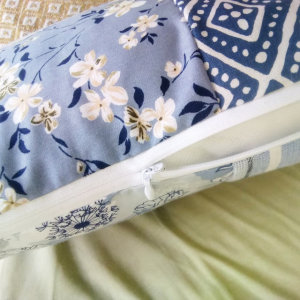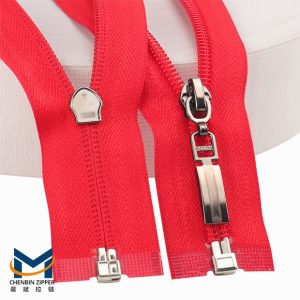Choosing the right zipper length for a dress is crucial in ensuring that your garment fits well and functions properly. This comprehensive guide will explore various aspects of zipper selection, including how to measure for the correct length, the types of zippers available, tips for sewing them into your dress, and common mistakes to avoid.
Understanding Zipper Measurements
When selecting a zipper, it’s important to understand how zippers are measured. The length of a zipper is typically measured from the top of the slider to the bottom stop. This means that when you purchase a zipper labeled as 12 inches, it refers to the length of the unzipping portion, not including any excess tape at the top or bottom.
Key Measurement Steps:
1. Measure the Opening: Start by measuring the opening where the zipper will be placed. This includes measuring from the top of the garment down to where you want the zipper to end.
2. Add Seam Allowance: Always add seam allowance to your measurement. For most projects, this is about 5/8 inch.
3. Consider Additional Features: If your dress design includes features like hook and eye closures at the neckline, add an extra 1/2 inch for this as well.
4. Final Calculation: For example, if you need a zipper for an 8-inch opening, you would calculate as follows:
| 8 inches+ 5/8 inch (seam allowance)+ 1/2 inch (hook and eye) = 9.25 inches |
Types of Zippers
There are several types of zippers commonly used in dressmaking, each suited for different applications:
– Invisible Zippers: These are designed to be hidden within seams, making them ideal for formal dresses where aesthetics are important. They come in various lengths but may not be available in as many colors as standard zippers.
– Separating Zippers: Used primarily in jackets and outerwear, these zippers open completely at the bottom. They are not typically used in dresses unless specified.
– All-Purpose Zippers: These are versatile and can be used in various garments, including dresses. They come in multiple lengths and colors and are suitable for medium-weight fabrics.
– Metal Zippers: Often used in denim or heavier fabrics, metal zippers add a rugged aesthetic to casual dresses or skirts. They are durable and can withstand significant wear.
– Plastic Zippers: Lightweight and often available in a variety of colors, plastic zippers are great for lightweight fabrics and casual wear. They are less durable than metal but can be more flexible.
How to Choose the Right Length
When choosing a zipper length for your dress:
– Opt for Longer Zippers: It’s generally advisable to select a zipper that is 2-4 inches longer than your measured opening. This extra length allows for easier sewing around the pull tab and ensures that you have enough material to work with.
– Check Your Pattern: If you are following a pattern, it will often specify the required zipper length. Always adhere to these guidelines when possible.
– Consider Fabric Type: The type of fabric you are using can also influence your choice of zipper length. Heavier fabrics may require longer zippers to accommodate thickness at seams.
Shortening a Zipper
If you find that you have a zipper that is too long for your project, it can easily be shortened:
1. Determine Desired Length: Measure how much shorter you need your zipper to be.
2. Create a New Stop: For conventional zippers, sew a zigzag stitch across the coils at your desired length to create a new stop.
3. Trim Excess Tape: Cut off any excess tape below your new stop.
4. Reinforce if Necessary: Depending on how much you’ve shortened it, consider reinforcing the new stop with additional stitches or fabric glue to ensure durability.
Tips for Sewing Zippers into Dresses
Sewing zippers can be daunting, but with practice and proper techniques, it becomes manageable:
– Use a Zipper Foot: This specialized presser foot allows you to sew close to the zipper teeth without catching them in your stitches.
– Pin or Baste First: Before sewing, pin or baste the zipper in place to ensure it aligns correctly with your garment seams.
– Test Your Zipper: Always test your zipper before finalizing it into your dress to ensure it opens and closes smoothly.
– Press Your Seams: After sewing in your zipper, press the seams flat before finishing your garment. This helps create a clean finish and ensures that everything lies smoothly.
Common Mistakes When Choosing Zipper Length
Even experienced sewists can make mistakes when selecting zipper lengths. Here are some common pitfalls:
– Not Accounting for Seam Allowance: Forgetting to add seam allowance can lead to an ill-fitting garment where the zipper does not reach its intended endpoint.
– Choosing Incompatible Types: Using an invisible zipper where a separating one is required (or vice versa) can lead to functional issues with how the dress opens or closes.
– Ignoring Fabric Stretch: If you’re working with stretchy fabrics like knits or spandex, consider using a longer zipper or one designed specifically for stretch materials to allow flexibility during wear.
Additional Resources
To further enhance your understanding of zippers and their applications in dressmaking, consider exploring these resources:
– Sewing Blogs and Forums: Some Websites offer community insights on best practices for sewing zippers into various garments.
– YouTube Channels: Many sewing enthusiasts share their techniques on platforms like YouTube; channels dedicated to sewing often have specific videos focused on installing different types of zippers.
– Books on Dressmaking: Look for books that cover garment construction; they typically include sections on closures like zippers with illustrations and detailed instructions.
Conclusion
Selecting the right length zipper for your dress involves careful measurement and consideration of both style and function. By understanding how zippers are measured, choosing appropriate types based on your garment’s needs, and following best practices for installation, you can ensure that your dress not only looks great but also functions well.
In summary:
– Measure accurately and consider seam allowances.
– Choose longer zippers when in doubt.
– Familiarize yourself with different types of zippers.
– Practice sewing techniques to improve your skills.
With these tips in mind, you’ll be well-equipped to tackle any dress project involving zippers!
FAQ
1. What is the difference between an invisible zipper and a regular zipper?
Invisible zippers are designed to be hidden within the seam of a garment, making them less visible when the garment is worn. The only part that shows is the pull tab. Regular zippers, on the other hand, have visible teeth and are typically used in applications where the zipper is meant to be seen.
2. How do I know what length zipper to buy?
To determine the appropriate zipper length, measure the opening where the zipper will be inserted and add 2-4 inches to that measurement. This extra length allows for easier sewing and ensures that the pull tab can be accommodated without restriction.
3. Can I shorten a zipper if it’s too long?
Yes, you can shorten a zipper if it’s too long. For non-separating zippers, you can sew a zigzag stitch across the coils at your desired length to create a new stop, then trim the excess tape below this stitching. To separate zippers, you will need to shorten them from the top while keeping the bottom intact.
4. What type of zipper should I use for a formal dress?
For formal dresses, an invisible zipper is often recommended because it provides a clean finish without distracting from the garment’s design. However, an all-purpose zipper may also be used if additional strength or durability is needed.
5. What tools do I need to sew a zipper into a dress?
To sew a zipper into a dress, you will need:
– A sewing machine with a straight-stitch capability
– A zipper foot for precise sewing along the zipper
– Pins or fabric clips to hold the zipper in place
– A seam ripper in case adjustments are needed
– Matching thread for a cohesive look
These tools will help ensure that your zipper installation is smooth and professional-looking.














